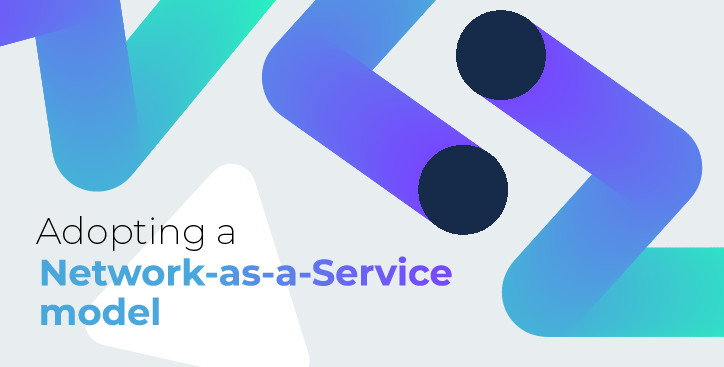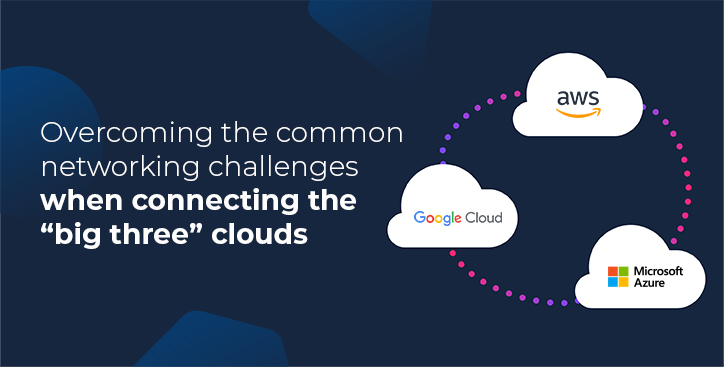Adopting a Network-as-a-Service model
By Alex Hawkes|25 October, 2021

Despite the great advancements in IT infrastructure consumption models that have been enabled by the cloud, the underlying network remains the last - and long awaited - piece of the digital transformation puzzle to fall into place. In this blog, we look at the key benefits for businesses adopting a Network-as-a-Service (NaaS) model.
A strong foundation for digital transformation
Historically, the enterprise network has been limited in purpose and singular in terms of function. CIOs and network managers often end up wrangling a patchwork of networks from different providers, many with overlapping propositions, along with a stable of ageing hardware, also from different vendors and with singular functionality.
This all adds up to an ever-growing technology debt and an inflexible, high-maintenance infrastructure that is becoming increasingly less tenable as the cloud and the adoption of ‘X-as-a-Service’ diverges the requirements of the network further from its capabilities.
The accelerating adoption of infrastructure, platforms and software as-a-Service (IaaS, PaaS, and SaaS) extol the three key benefits of a cloud environment - flexibility, scalability, and speed - and help perpetuate transformative ways of working. But it’s a transformation that can’t be fully realised without the support of the underlying network.
So, with Network-as-a-Service (NaaS) now reaching a stage of maturity through offerings such as Console Connect, CIOs finally have the opportunity to build a strong foundation for digital transformation, and achieve some basic cost and service improvement goals as well.
A typical ‘menu’ of NaaS benefits might look like:
- An agile network infrastructure that can adapt to traffic changes from cloud adoption
- Continuous improvement of the hardware and software elements of the network
- Migration of applications to the cloud with confidence in the network’s ability to match
- Offload technical risk and maintenance to the provider and focus on core business
The end-goal for a CIO adopting NaaS, is to ensure that the network is state of the art and continually adopts innovations, frees the enterprise IT staff from monitoring tasks with no real ability to fix issues, rolls up and reduces the range of SLAs, and reduces the need for specialist skills in-house.
Some of the key benefits of implementing NaaS
1. Increased uptime
Service Level Agreements (SLAs) are created with network providers to guarantee levels of availability, uptime, and response for addressing network issues. Enterprises can end up with an overlapping patchwork of SLAs from different providers that apply to different parts of their WAN.
With the ability to grow the network as your organisation grows, using a NaaS model, enterprises can consolidate the number of providers and thus the differentiation between SLAs. The private connections established via NaaS is one way to ensure consistently reliable and high-quality delivery of services and applications. Private links can be configured to prioritise certain classes of service, ensuring applications that are more latency-sensitive have their specific demands met.
2. Continuous maintenance
The NaaS model offloads ownership of the network infrastructure to the provider, along with maintenance and monitoring of all the hardware and software. This removes the burden of technical debt from the organisation as well as the need to have specialist skills in-house.
Furthermore, the benefits of Software Defined Interconnection and virtualisation technology make it easier for the provider to offer a continuous monitoring service that makes threats easily preventable, and ensures notifications so major issues can be identified and resolved.
3. Enhanced security
With NaaS, service providers can offer more granular control to protect and secure sensitive data, applications, and resources. Because the links created by a NaaS such as Console Connect are direct and therefore private, data doesn’t cross the public internet, and the network can provide a barrier against DDoS attacks.
4. Reduced costs
Although cost savings enabled by the cloud are much debated, when it comes to the network infrastructure benefits can be realised by offloading maintenance costs of the infrastructure to the service provider.
This comes back to taking the historical capex model of hardware, software, and skills needed in house, and turning it into an opex model similar to a ‘subscription’ to the network with none of the caveats of ownership.
The right NaaS partner can make the digital transformation journey as smooth as possible, minimising expenses related to the implementation of new processes and equipment. Simplified control over how the network is used also means you can focus on transporting mission critical traffic across your premium links, and offload non-critical traffic to the public internet.
The adoption of NaaS should help drive further adoption of the cloud and in return, NaaS capabilities will evolve as a result. From the offset, NaaS should help CIOs migrate and transform their infrastructure and going forward will give enterprises a lot of different network options better suited to the demands of modern business.

.jpg)





.jpg)

